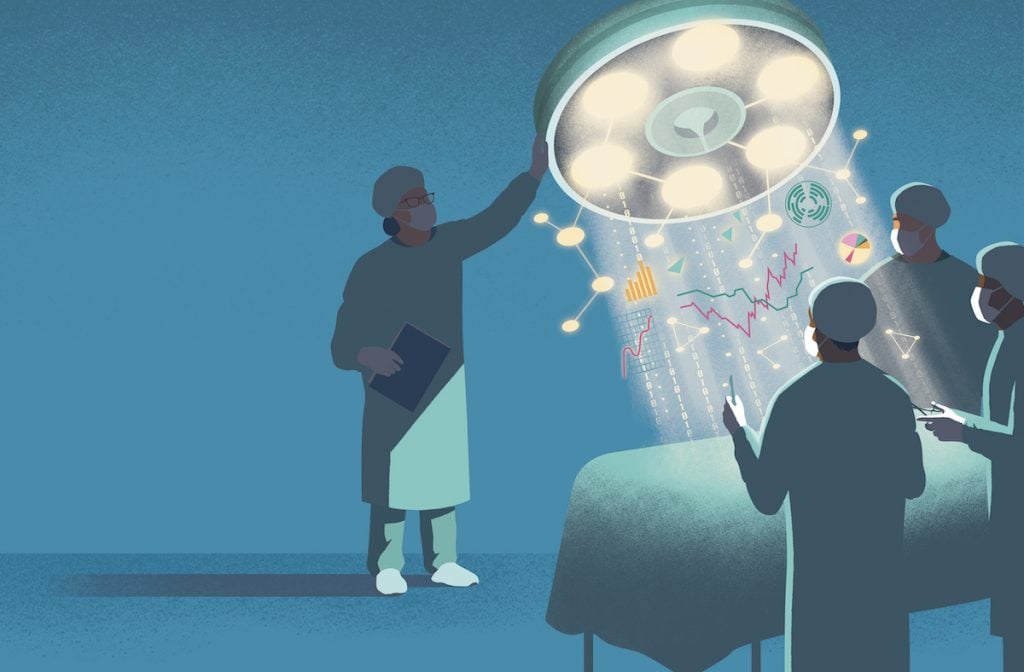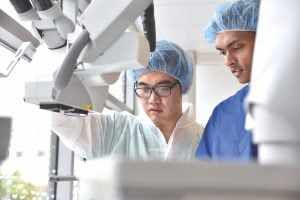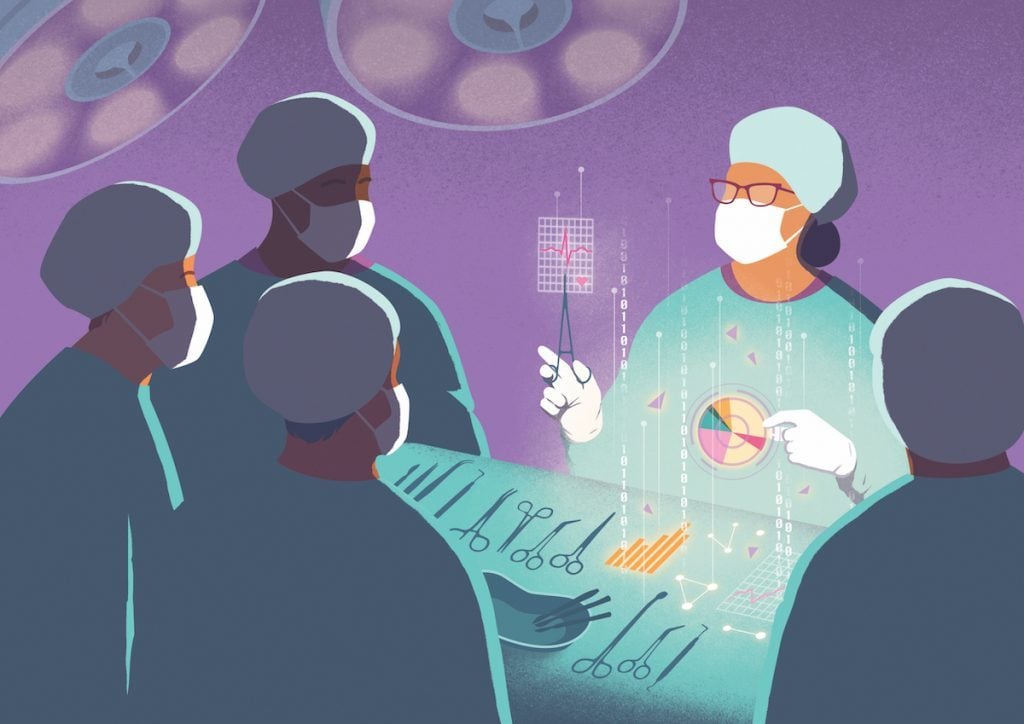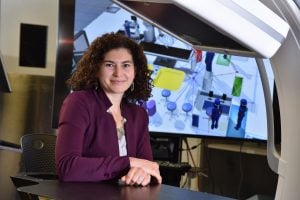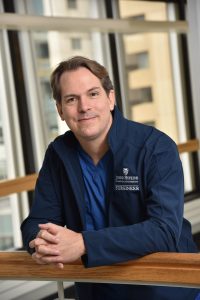The wound was deep. At least 4 inches. And the surgical opening was at least that wide.
Three Johns Hopkins engineering students, clad in green scrubs, huddled around the patient. They quietly conferred on how much surgical sponge was needed to fill the wound, then set about cutting the black sponge into pieces to fill the large incision. Six hands working quickly, they carefully adhered the skinlike adhesive over the opening and attached the seal for the wound vacuum. As the vacuum suctioned air and fluid from the sponge pieces, the wound began to seal, and the graduate students began to relax. When it was clear that there were no leaks, they high-fived and began peppering the nearby Johns Hopkins surgical resident, Eric Etchill, with questions.
After Etchill examined each group’s work from the class of 22, a few students picked up scalpels. Then they cut thick slices from the watermelons (which were being used as substitutes for the vascular patients) in the Carnegie Center for Surgical Innovation—and spent the next few minutes enjoying their juicy snack.
It was just another Thursday morning in Surgery for Engineers, a graduate-level course created by Jeff Siewerdsen, the John C. Malone Professor and vice chair for clinical and industry translation in the Department of Biomedical Engineering.
Siewerdsen’s full-year course series, called Surgineering, aims to bring new perspectives to the operating room: first, to expose engineering students to real-life principles, workflow, and challenges of clinical medicine; and second, to bring engineers with a depth of understanding in both medicine and engineering to the challenges of 21st-century medicine.
“The challenge is not only to innovate,” says Siewerdsen, who is co-director of the Carnegie Center, a collaboration between the Department of Biomedical Engineering and the Department of Neurosurgery. “It is to ‘bury the complexity’ of systems that affect a patient’s care and to transform the hospital into an enterprise that continuously learns and improves.”
Enter the “surgineer,” a new kind of engineer, who, Siewerdsen predicts, will become an increasingly essential member of the clinical workforce. With a foundation in biomedical engineering, expertise in systems and data science, and—most importantly—a genuine understanding of interventional procedures, “the surgineer will be equipped to apply perspectives of systems engineering and data science to improving workflow and patient safety in the OR,” says Siewerdsen.
Now in its second year, the Surgery for Engineers course takes 20 or so graduate students from the Whiting School of Engineering and the Johns Hopkins University School of Medicine through 13 areas of interventional medicine, including general and specialized surgeries, interventional radiology, and radiation oncology. Over the course of the fall semester, the surgineers scrub in to learn surgical skills, such as the basics of suturing, cautery, and wound closure, and they practice taking biopsies and placing endoscopes—often under the watchful eye of surgical resident Sandra DiBrito, who has been integral to course planning.
“This class gets at fundamentals,” Siewerdsen says. “A stronger foundation helps to fuel better innovation and more meaningful solutions. For a biomedical engineer, there is no better way to spark ideas on important problems than to connect with clinicians.”

